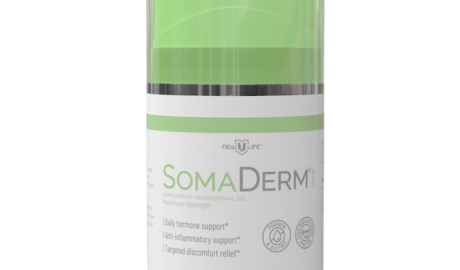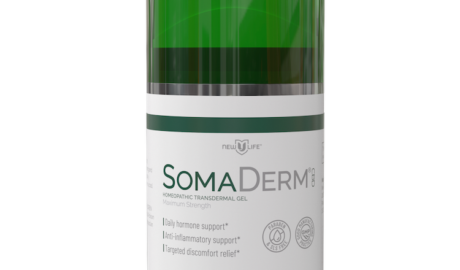Tahini is a creamy paste made from ground sesame seeds. It’s a staple in cuisines across the globe, from the Middle East to Greece to North Africa. Tahini is delicious, nutritious, and versatile: it can be used as a spread on butter or toast, as a dip for vegetables or chips, in a smoothie, or as an additive to baked goods like brownies. In Middle Eastern cuisine, it’s often served as an appetizer before meals, mixed either with vinegar drops or yogurt. It’s also commonly used to make hummus (along with chickpeas).
Is Tahini Healthy?
Yes! Tahini contains protein, antioxidants, key minerals, vitamins, and more. According to the USDA, two tablespoons of tahini is equivalent to one serving. One serving of tahini, which is roughly 178 calories, contains the following nutritional values:
- 6.36 grams of carbohydrates
- 2.8 grams of fiber
- 0.15 grams of sugar
- 5.1 grams of protein
- 14 grams of mono- and polyunsaturated fats (fats that are beneficial for cardiovascular and overall health)
- Eight percent daily value (DV) magnesium
- 22 percent DV phosphorous
- 14 percent DV iron
- 12 percent DV calcium
5 Potential Health Benefits of Tahini
Supports Bone Health
Because tahini is rich in minerals like calcium, magnesium, and phosphorus, it can help provide support for maintaining strong and healthy bones. Regular consumption helps preserve bone density and reduce the risk of osteoporosis.
Promotes Blood Pressure Regulation
Sesame seeds are rich in nutrients that support healthy blood pressure regulation, including polyunsaturated fatty acids, proteins, vitamin E, and lignans. Studies have found that sesame seeds and sesame oil have antioxidant, antihypertensive, hypolipidemic, and appetite-controlling properties. In a 2021 study, researchers found that tahini consumption in study subjects led to lower blood pressure, lower pulse rate, and improved functioning in endothelial cells (cells that play an important role in blood vessel health function and overall vascular health).
Supports Cholesterol Balance
Tahini contains naturally high levels of oleic acid, a nutrient critical in supporting lowered levels of bad cholesterol (LDL) while raising good cholesterol levels (HDL). It’s a great tool to have in your nutritional arsenal to keep your cholesterol in a healthy balance.
Promotes Blood Sugar Control
Adding tahini to meals may help support glycemic control and help manage healthy blood sugar levels.
Supports Digestive Health
Thanks to its dietary fiber content, tahini helps promote digestive health by facilitating regular bowel movements and nurturing beneficial gut bacteria.
What Does Tahini Taste Like?
If learning about its many health benefits has made you interested in trying tahini, your next question might be: What does tahini taste like?
Tahini is made by grinding sesame seeds into a paste so that you can think of tahini as sesame seed butter. Tahini’s texture and appearance – thick, creamy, oily – resembles peanut butter or other nut butters. But unlike many nut butters, tahini is not inherently sweet.
The taste of tahini is often described as a toasted, earthy, nutty flavor. Tahini can have a slightly bitter aftertaste but is mild and not overpowering. If you’ve had tahini that tastes unpleasantly or astringently bitter, that’s a sign of expired or past prime tahini. Some people don’t consider tahini bitter, describing the taste as earthy and nutty.
On the other hand, some enjoy the slight bitterness and find that it’s one of the reasons that tahini is such a versatile food, complementing a wide range of dishes and flavor profiles.
As a rule of thumb, tahini made from roasted sesame seeds usually tastes milder than raw or unhulled seeds. But when it comes down to it, it’s hard to answer the question “What does tahini taste like?” without emphasizing the importance of quality. After all, not all tahinis are created equal.
Some of the most important factors that influence tahini’s taste (and even its nutritional content) are how it is hulled and whether the tahini is made of pure, ground sesame seeds or whether a carrier oil has been added.
Better Taste, Better Nutrition
Making the best-tasting tahini involves using hulled sesame seeds with their outer shells removed. Not only does hulling the sesame seeds remove much of the bitter flavor, but it also removes phytic acid, a compound that can cause nutrient malabsorption and gut problems.
Another factor that can affect the taste and nutrition of your tahini is the use of carrier oils. Some companies blend their sesame seeds with a low-cost carrier oil, often cutting corners by choosing a cheap vegetable oil as a filler. The result is an inferior product: oily, less tasty, and less nutritious.
Phat Fudge knows how vital taste and nutrition are. That’s why the Phat Fudge 12 Count performance bars are powered by smooth, pure tahini made from hulled sesame seeds – and nothing else. Tahini is nut-free, gluten-free, and plant-based, and Phat Fudge’s tahini is Keto and Paleo-certified.
Phat Fudge’s squeezable functional food packs contain all-organic tahini paste from ground sesame, honey, cacao powder, maca root powder, sesame oil (instead of olive oil), turmeric root powder, vanilla bean, sea salt, and 6-8 mg of caffeine. Refrigeration is not needed.
You can order Phat Fudge exclusively through Natural Healthy Concepts.





